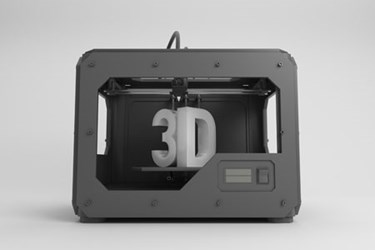3D Printed Organs Help Make Radiotherapy More Precise
By Chuck Seegert, Ph.D.

Tumors and organs from cancer patients have been replicated by 3D printing, making it possible to precisely determine the dosage of radiotherapy for the tissue. Early studies show that the models accurately copy the tumor and the surrounding organs, which helps calculate how much radiation needs to be applied to the site.
The 3D printed models, which are called “phantoms,” are replicates that mimic the size and density of tissue in the human body. These replicas have been used in conventional radiology for some time to test imaging equipment without unnecessarily exposing a patient to radiation. Sometimes phantoms are used to help calibrate equipment, and other times they are used to help train personnel.
Now, however, phantoms have been used to help assist in patient treatment, according to a recent press release from the Institute of Cancer Research. The phantoms were developed out of a desire to improve molecular radiotherapy, which is the delivery of radioactive isotopes into the body. The radioisotopes are often injected and then localized by natural processes into a target tissue where they attack a tumor.
A consistent challenge in molecular radiotherapy is to provide enough radiation to kill the cancer cells while sparing the surrounding healthy tissue, according to the press release. After making the 3D printed plastic models, the researchers subjected the replica to the same radioactive liquid that is used to treat patients. This helped predict the effects that the radiotherapy would have on that specific patient. The researchers could then specify the maximum amount of dosage that could be delivered safely.
The research team originally made phantoms by hand, but reports on how 3D printed models have been used for surgical planning got them thinking about how it might help in their work. Using the 3D models helped the team perform complex radiotherapy calculations more accurately — something that is a significant challenge with 2D information.
“The big challenge we faced was to produce a model that was both anatomically accurate and allowed us to monitor the dose of radiation it received,” said study co-leader Dr. Jonathan Gear, a clinical scientist in the Joint Department of Physics at The Institute of Cancer Research, London and The Royal Marsden NHS Foundation Trust, according to the press release. “We found that the printed replicas could give us information we couldn’t get from 2D scans – you will always get more information from a 3D model than a flat image.”
Additive manufacturing has been rapidly developing in the medical device space for a number of applications. Rapid prototyping is a significant benefit of 3D printing, but iterating new designs is not its only use. Recently, the FDA approved a 3D printed implant system for custom craniofacial reconstructions.
